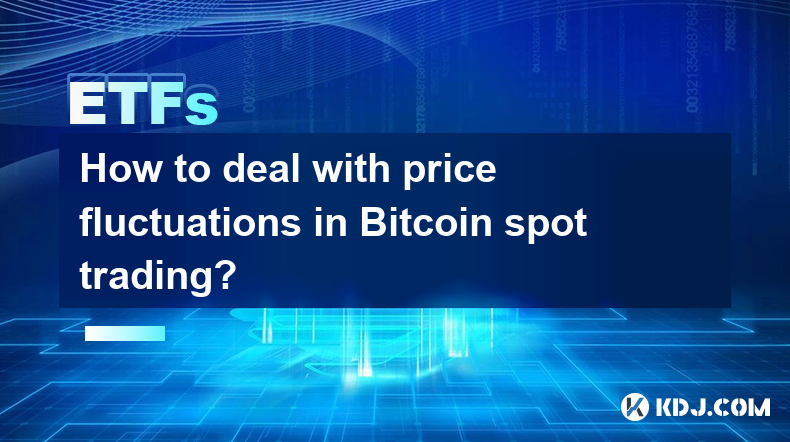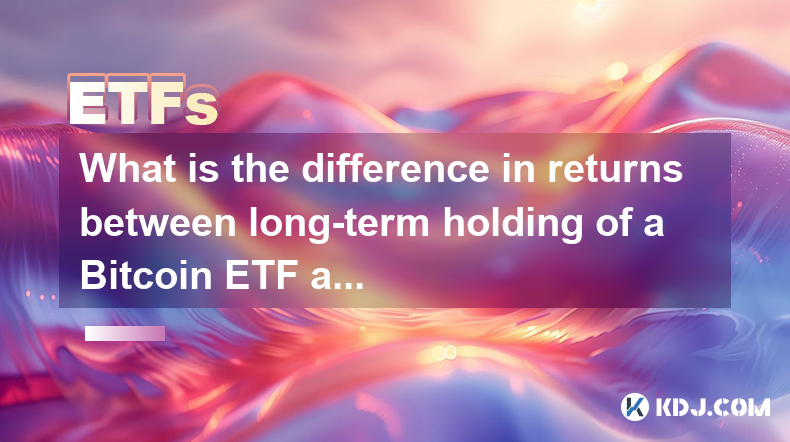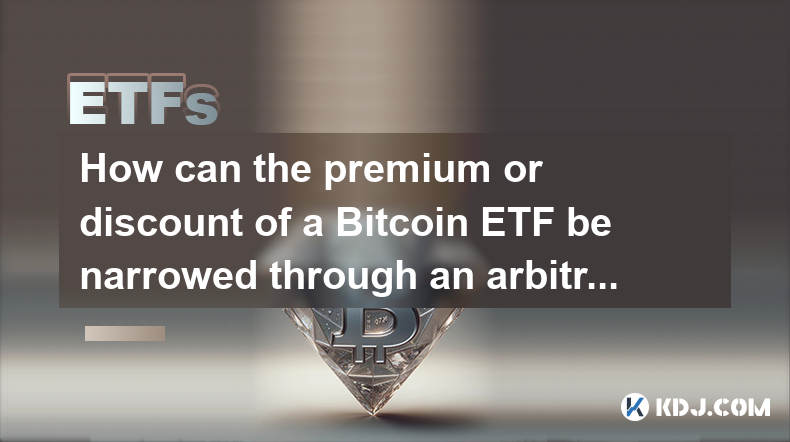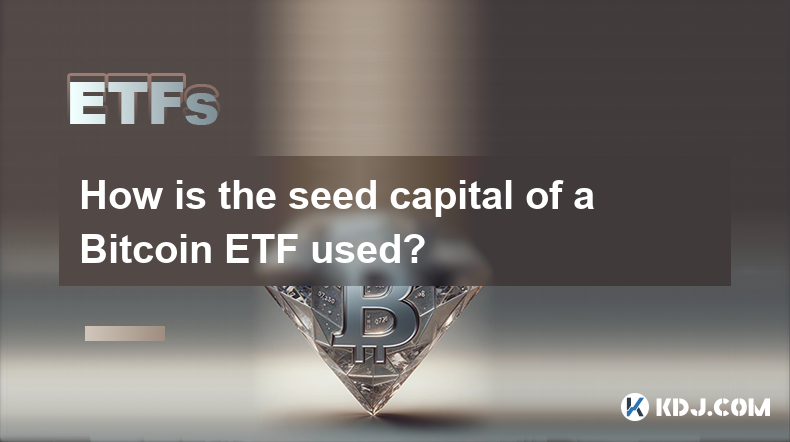-
 Bitcoin
Bitcoin $87,772.6996
0.99% -
 Ethereum
Ethereum $1,570.5330
-2.49% -
 Tether USDt
Tether USDt $1.0000
0.01% -
 XRP
XRP $2.0836
-1.10% -
 BNB
BNB $599.1765
0.07% -
 Solana
Solana $138.0201
-2.11% -
 USDC
USDC $0.9999
0.01% -
 Dogecoin
Dogecoin $0.1599
0.63% -
 TRON
TRON $0.2467
0.31% -
 Cardano
Cardano $0.6233
-1.67% -
 Chainlink
Chainlink $13.1154
-2.78% -
 UNUS SED LEO
UNUS SED LEO $9.1017
-1.66% -
 Avalanche
Avalanche $19.7493
-1.09% -
 Stellar
Stellar $0.2496
0.02% -
 Toncoin
Toncoin $2.9084
-3.65% -
 Shiba Inu
Shiba Inu $0.0...01230
-2.09% -
 Sui
Sui $2.2248
2.27% -
 Hedera
Hedera $0.1694
-0.70% -
 Bitcoin Cash
Bitcoin Cash $342.3982
0.49% -
 Hyperliquid
Hyperliquid $18.1794
-0.12% -
 Litecoin
Litecoin $78.6773
-0.19% -
 Polkadot
Polkadot $3.7586
-4.30% -
 Dai
Dai $0.9998
-0.02% -
 Bitget Token
Bitget Token $4.4381
-1.01% -
 Ethena USDe
Ethena USDe $0.9992
0.01% -
 Pi
Pi $0.6309
-1.94% -
 Monero
Monero $214.9808
-0.07% -
 Uniswap
Uniswap $5.2523
-2.33% -
 Pepe
Pepe $0.0...07838
1.42% -
 OKB
OKB $50.7171
-0.70%
How to deal with price fluctuations in Bitcoin spot trading?
Bitcoin's volatile price requires a robust trading plan, incorporating technical & fundamental analysis, risk management (stop-loss orders, diversification), emotional discipline, and continuous market awareness for successful spot trading.
Feb 28, 2025 at 01:36 am

How to Deal with Price Fluctuations in Bitcoin Spot Trading?
Key Points:
- Understanding Bitcoin's Volatility: Bitcoin's price is inherently volatile due to its relatively young age, limited supply, regulatory uncertainty, and susceptibility to market sentiment swings. This volatility presents both significant risk and substantial reward for traders. Successfully navigating this volatility requires a comprehensive understanding of market dynamics and a robust trading strategy.
- Developing a Solid Trading Plan: A well-defined plan is crucial. This involves setting clear entry and exit points based on technical and fundamental analysis, defining risk tolerance, and adhering to a disciplined approach to avoid emotional decision-making. The plan should incorporate risk management strategies to limit potential losses.
- Utilizing Technical Analysis: Technical analysis involves studying price charts and trading volume to identify trends, support and resistance levels, and potential price reversal points. Indicators like moving averages, Relative Strength Index (RSI), and Bollinger Bands can provide valuable insights into market momentum and potential trading opportunities.
- Employing Fundamental Analysis: Fundamental analysis focuses on evaluating factors that could influence Bitcoin's long-term value, such as technological advancements, regulatory changes, adoption rates, and macroeconomic conditions. Understanding these factors can help in making informed long-term investment decisions.
- Risk Management Techniques: Effective risk management is paramount. This involves techniques like position sizing (determining how much capital to allocate to each trade), stop-loss orders (automatically selling when the price reaches a predetermined level), and diversification (spreading investments across different assets to reduce overall risk).
- Emotional Discipline and Patience: The cryptocurrency market is highly emotional. Fear and greed can lead to impulsive decisions. Maintaining emotional discipline, practicing patience, and sticking to the trading plan are crucial for long-term success.
- Staying Informed and Adaptable: The cryptocurrency market is constantly evolving. Staying updated on market news, technological developments, and regulatory changes is essential. Being adaptable and willing to adjust the trading strategy based on new information is vital.
- Understanding Bitcoin's Volatility:
Bitcoin's price is notorious for its volatility. Unlike traditional assets with established historical data and predictable patterns, Bitcoin's relatively short history and unique characteristics contribute to significant price swings. Several factors contribute to this volatility:
- Limited Supply: Bitcoin's fixed supply of 21 million coins creates scarcity, which can drive up demand and price. However, this limited supply also makes it more susceptible to sharp price movements based on shifts in market sentiment. A sudden surge in demand can lead to rapid price increases, while a decrease in demand can trigger equally rapid drops.
- Regulatory Uncertainty: The regulatory landscape for cryptocurrencies is still evolving globally. Changes in regulations, whether positive or negative, can significantly impact Bitcoin's price. Uncertainty about future regulations can create volatility as investors react to potential changes.
- Market Sentiment: Bitcoin's price is highly sensitive to market sentiment. Positive news, such as increased adoption by major companies or positive regulatory developments, can boost prices. Conversely, negative news, such as security breaches or regulatory crackdowns, can cause significant price drops. This emotional aspect of the market is a major driver of volatility.
- Technological Advancements: Advancements in Bitcoin's underlying technology, such as scaling solutions or improved security protocols, can influence its price. Positive developments can increase investor confidence and drive up prices, while setbacks can lead to price corrections.
- Macroeconomic Factors: Global macroeconomic events, such as economic recessions, inflation, or geopolitical instability, can also impact Bitcoin's price. During times of economic uncertainty, investors may seek refuge in Bitcoin as a hedge against inflation or other risks, driving up demand. However, during periods of economic stability, investors may shift their focus to other assets, leading to price drops.
- Developing a Solid Trading Plan:
A well-defined trading plan is the cornerstone of successful Bitcoin spot trading. This plan should act as a roadmap, guiding your decisions and helping you to stay disciplined in the face of market fluctuations. Several key components are necessary:
- Defining Your Trading Goals: Before you begin trading, clearly define your goals. Are you aiming for short-term gains, long-term investment, or a combination of both? Your goals will dictate your trading strategy and risk tolerance.
- Setting Entry and Exit Points: Based on technical and fundamental analysis, determine your entry and exit points for each trade. This involves identifying potential support and resistance levels, as well as setting stop-loss orders to limit potential losses.
- Determining Risk Tolerance: Assess your risk tolerance – how much are you willing to lose on a single trade or in a given period? Never invest more than you can afford to lose. Your risk tolerance will inform your position sizing and stop-loss orders.
- Backtesting Your Strategy: Before implementing your trading plan with real money, backtest it using historical data. This will allow you to assess the effectiveness of your strategy and identify potential weaknesses.
- Sticking to Your Plan: Once you've developed your trading plan, adhere to it rigorously. Avoid impulsive decisions based on emotions or short-term market fluctuations. Discipline is essential for long-term success.
- Utilizing Technical Analysis:
Technical analysis involves examining price charts and trading volume to identify patterns and predict future price movements. It's a valuable tool for short-term trading, helping you identify entry and exit points based on observable market data. Several key indicators are commonly used:
- Moving Averages: Moving averages smooth out price fluctuations, making it easier to identify trends. Common types include simple moving averages (SMA) and exponential moving averages (EMA). Crossovers between different moving averages can signal potential buy or sell signals.
- Relative Strength Index (RSI): RSI measures the magnitude of recent price changes to evaluate overbought or oversold conditions. RSI values above 70 generally suggest an overbought market, indicating a potential price correction, while values below 30 suggest an oversold market, indicating a potential price rebound.
- Bollinger Bands: Bollinger Bands consist of three lines: a simple moving average and two standard deviation bands above and below the moving average. When prices touch the upper band, it may indicate an overbought condition, and when they touch the lower band, it may indicate an oversold condition.
- Support and Resistance Levels: Support levels represent price points where buying pressure is strong enough to prevent further price declines. Resistance levels represent price points where selling pressure is strong enough to prevent further price increases. Breakouts above resistance or below support can signal significant price movements.
- Candlestick Patterns: Candlestick patterns represent price movements over a specific time period. Various patterns, such as hammers, dojis, and engulfing patterns, can provide insights into potential price reversals or continuations.
- Employing Fundamental Analysis:
While technical analysis focuses on price charts, fundamental analysis examines the underlying factors that influence Bitcoin's long-term value. This approach is crucial for long-term investors seeking to make informed decisions based on the intrinsic worth of the asset. Key factors to consider include:
- Technological Advancements: The evolution of Bitcoin's technology, such as improvements in scalability, security, and transaction speed, can significantly impact its long-term value. Advancements that enhance efficiency and adoption can drive up prices, while setbacks can negatively affect its value.
- Adoption Rate: The growing adoption of Bitcoin by businesses, institutions, and individuals is a crucial factor influencing its price. Wider acceptance increases demand, leading to higher prices. Conversely, decreased adoption can put downward pressure on the price.
- Regulatory Landscape: The regulatory environment surrounding Bitcoin is constantly evolving. Favorable regulations can boost investor confidence and drive up prices, while unfavorable regulations can lead to price declines. Staying informed about regulatory changes is crucial for fundamental analysis.
- Macroeconomic Conditions: Global macroeconomic factors, such as inflation, interest rates, and economic growth, can indirectly impact Bitcoin's price. During times of high inflation, investors may see Bitcoin as a hedge against inflation, driving up demand. However, macroeconomic instability can also lead to increased risk aversion, potentially causing price declines.
- Market Competition: The cryptocurrency market is competitive. The emergence of new cryptocurrencies and blockchain technologies can impact Bitcoin's market share and price. Analyzing the competitive landscape is essential for understanding Bitcoin's long-term prospects.
- Risk Management Techniques:
Effective risk management is crucial for mitigating potential losses in Bitcoin spot trading. Several techniques can help protect your capital and ensure the longevity of your trading career:
- Position Sizing: Position sizing involves determining the appropriate amount of capital to allocate to each trade. Never risk more than a small percentage of your total capital on any single trade. A common rule of thumb is to risk no more than 1-2% of your capital per trade.
- Stop-Loss Orders: Stop-loss orders automatically sell your Bitcoin when the price reaches a predetermined level, limiting potential losses. Setting stop-loss orders is crucial for protecting against significant price drops. The placement of stop-loss orders should be carefully considered based on your risk tolerance and technical analysis.
- Diversification: Diversification involves spreading your investments across different assets, including other cryptocurrencies or traditional assets. This reduces the overall risk of your portfolio, as losses in one asset can be offset by gains in another.
- Hedging: Hedging involves using financial instruments to offset potential losses from Bitcoin price fluctuations. For example, you could use Bitcoin futures contracts to hedge against a price decline.
- Regular Portfolio Review: Regularly review your portfolio's performance and adjust your strategy as needed. This allows you to identify potential risks and opportunities and make informed decisions based on your portfolio's performance and market conditions.
- Emotional Discipline and Patience:
The cryptocurrency market can be highly emotional. Fear and greed can lead to impulsive decisions, which can result in significant losses. Maintaining emotional discipline and practicing patience are crucial for long-term success:
- Avoid Emotional Trading: Do not let emotions dictate your trading decisions. Stick to your trading plan and avoid impulsive buys or sells based on fear or greed.
- Manage Stress: Trading can be stressful. Develop strategies for managing stress, such as meditation or exercise, to help you make rational decisions.
- Take Breaks: If you find yourself becoming overly emotional, take a break from trading. Stepping away from the market can help you regain perspective and make more rational decisions.
- Learn from Mistakes: Everyone makes mistakes in trading. Learn from your mistakes, and don't let them discourage you. Use your experiences to refine your strategy and improve your decision-making.
- Seek Mentorship: Consider seeking mentorship from experienced traders who can provide guidance and support. Learning from others' experiences can help you avoid common pitfalls.
- Staying Informed and Adaptable:
The cryptocurrency market is dynamic and constantly evolving. Staying informed and adapting to changing market conditions is vital for long-term success:
- Follow Market News: Stay updated on the latest market news, regulatory changes, and technological developments. This information can significantly impact Bitcoin's price and your trading strategy.
- Read Industry Publications: Read industry publications and follow reputable analysts to gain insights into market trends and potential risks.
- Network with Other Traders: Network with other traders to share knowledge and learn from their experiences. This can provide valuable insights and perspectives.
- Adapt Your Strategy: Be prepared to adapt your trading strategy based on changing market conditions. What works well in one market environment may not work in another.
- Embrace Continuous Learning: The cryptocurrency market is constantly evolving. Commit to continuous learning to stay ahead of the curve and adapt to new challenges.
FAQs:
Q: What is spot trading in Bitcoin?
A: Spot trading involves buying and selling Bitcoin at the current market price for immediate delivery. It's different from futures or options trading, which involve contracts for future delivery.
Q: How can I reduce my risk in Bitcoin spot trading?
A: Reduce risk through diversified investment, proper position sizing, utilizing stop-loss orders, and thorough research & analysis before any trade. Never invest more than you can afford to lose.
Q: Are there any guaranteed strategies for profiting from Bitcoin price fluctuations?
A: No, there are no guaranteed strategies for profiting from Bitcoin's price fluctuations. The market is inherently volatile, and losses are possible despite thorough planning. Success requires a combination of knowledge, skill, discipline, and a bit of luck.
Q: What are the best resources for learning more about Bitcoin spot trading?
A: Many online resources can help, including reputable cryptocurrency exchanges' educational materials, books on technical and fundamental analysis, and online courses focusing on cryptocurrency trading. However, always be wary of scams and ensure the information comes from trustworthy sources.
Q: How frequently should I check my Bitcoin spot trading positions?
A: The frequency depends on your trading style and risk tolerance. Day traders might check frequently, while long-term holders might check less often. Over-monitoring can lead to emotional decisions, so a schedule aligned with your strategy is key.
Q: What are the potential downsides of Bitcoin spot trading?
A: The primary downside is the high volatility of Bitcoin's price. Significant losses are possible if the market moves against your position. Other risks include exchange security breaches, regulatory changes, and the overall uncertainty inherent in the cryptocurrency market.
Disclaimer:info@kdj.com
The information provided is not trading advice. kdj.com does not assume any responsibility for any investments made based on the information provided in this article. Cryptocurrencies are highly volatile and it is highly recommended that you invest with caution after thorough research!
If you believe that the content used on this website infringes your copyright, please contact us immediately (info@kdj.com) and we will delete it promptly.
- Meteora Labs sued by investors over alleged M3M3 token price manipulation
- 2025-04-22 09:40:12
- This is a published version of our weekly Forbes Crypto Confidential newsletter. Sign up here to get Crypto Confidential days earlier free in your inbox.
- 2025-04-22 09:40:12
- Trump Token Unlocks Are When a Group of People—Usually Project Team Members, Early Investors or Advisors—Receive Their Allocated Tokens
- 2025-04-22 09:35:14
- Meme cryptocurrency Dogecoin is currently trading at an important support level against Bitcoin
- 2025-04-22 09:35:14
- Dogecoin (DOGE) Price Broke Out of Two Technical Patterns, Setting the Stage for a Bullish Run
- 2025-04-22 09:30:12
- Mutuum Finance (MUTM) Presale Raises Over $7M From 8400+ Buyers
- 2025-04-22 09:30:12
Related knowledge

What is the difference in returns between long-term holding of a Bitcoin ETF and holding Bitcoin directly?
Apr 09,2025 at 04:15am
When considering the difference in returns between long-term holding of a Bitcoin ETF and holding Bitcoin directly, it's essential to understand the nuances and factors that affect each investment option. Both approaches have their unique advantages and potential drawbacks, which can significantly impact the overall returns over time. Understanding Bitc...

How is the "roll cost" of a futures Bitcoin ETF generated?
Apr 08,2025 at 01:22pm
The 'roll cost' of a futures Bitcoin ETF is a critical concept for investors to understand, as it directly impacts the performance of the ETF. In this article, we will delve into the mechanics of how the roll cost is generated, exploring the underlying processes and factors that contribute to this cost. Understanding Futures ContractsFutures contracts a...

How can the premium or discount of a Bitcoin ETF be narrowed through an arbitrage mechanism?
Apr 09,2025 at 12:07am
Arbitrage mechanisms play a crucial role in narrowing the premium or discount of a Bitcoin Exchange Traded Fund (ETF). Understanding how these mechanisms work can provide valuable insights into the dynamics of Bitcoin ETFs and their relationship with the underlying asset. This article will delve into the specifics of how arbitrage can be used to align t...

What factors affect the bid-ask spread of a Bitcoin ETF?
Apr 08,2025 at 08:50pm
The bid-ask spread of a Bitcoin Exchange Traded Fund (ETF) is a critical metric that investors and traders closely monitor. It represents the difference between the highest price a buyer is willing to pay (bid) and the lowest price a seller is willing to accept (ask). Several factors influence this spread, and understanding them can help investors make ...

How is the seed capital of a Bitcoin ETF used?
Apr 10,2025 at 02:15pm
The seed capital of a Bitcoin ETF plays a crucial role in the establishment and operation of the fund. This initial investment is used to create the fund's underlying assets, manage operational costs, and ensure the ETF can start trading on an exchange. Understanding how this seed capital is utilized provides insight into the mechanics of Bitcoin ETFs a...

What is the difference between "physically backed" and "synthetic" Bitcoin ETFs in terms of holding assets?
Apr 10,2025 at 04:56pm
Bitcoin Exchange Traded Funds (ETFs) have become a popular way for investors to gain exposure to the cryptocurrency market without directly owning the underlying asset. There are two primary types of Bitcoin ETFs: physically backed and synthetic. Understanding the differences between these two types, particularly in terms of how they hold assets, is cru...

What is the difference in returns between long-term holding of a Bitcoin ETF and holding Bitcoin directly?
Apr 09,2025 at 04:15am
When considering the difference in returns between long-term holding of a Bitcoin ETF and holding Bitcoin directly, it's essential to understand the nuances and factors that affect each investment option. Both approaches have their unique advantages and potential drawbacks, which can significantly impact the overall returns over time. Understanding Bitc...

How is the "roll cost" of a futures Bitcoin ETF generated?
Apr 08,2025 at 01:22pm
The 'roll cost' of a futures Bitcoin ETF is a critical concept for investors to understand, as it directly impacts the performance of the ETF. In this article, we will delve into the mechanics of how the roll cost is generated, exploring the underlying processes and factors that contribute to this cost. Understanding Futures ContractsFutures contracts a...

How can the premium or discount of a Bitcoin ETF be narrowed through an arbitrage mechanism?
Apr 09,2025 at 12:07am
Arbitrage mechanisms play a crucial role in narrowing the premium or discount of a Bitcoin Exchange Traded Fund (ETF). Understanding how these mechanisms work can provide valuable insights into the dynamics of Bitcoin ETFs and their relationship with the underlying asset. This article will delve into the specifics of how arbitrage can be used to align t...

What factors affect the bid-ask spread of a Bitcoin ETF?
Apr 08,2025 at 08:50pm
The bid-ask spread of a Bitcoin Exchange Traded Fund (ETF) is a critical metric that investors and traders closely monitor. It represents the difference between the highest price a buyer is willing to pay (bid) and the lowest price a seller is willing to accept (ask). Several factors influence this spread, and understanding them can help investors make ...

How is the seed capital of a Bitcoin ETF used?
Apr 10,2025 at 02:15pm
The seed capital of a Bitcoin ETF plays a crucial role in the establishment and operation of the fund. This initial investment is used to create the fund's underlying assets, manage operational costs, and ensure the ETF can start trading on an exchange. Understanding how this seed capital is utilized provides insight into the mechanics of Bitcoin ETFs a...

What is the difference between "physically backed" and "synthetic" Bitcoin ETFs in terms of holding assets?
Apr 10,2025 at 04:56pm
Bitcoin Exchange Traded Funds (ETFs) have become a popular way for investors to gain exposure to the cryptocurrency market without directly owning the underlying asset. There are two primary types of Bitcoin ETFs: physically backed and synthetic. Understanding the differences between these two types, particularly in terms of how they hold assets, is cru...
See all articles






















































































